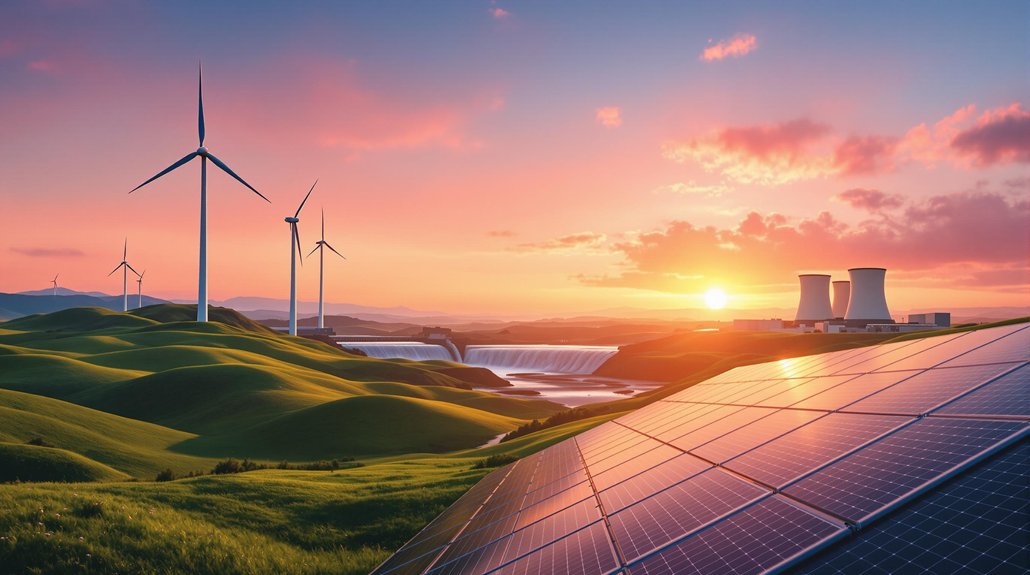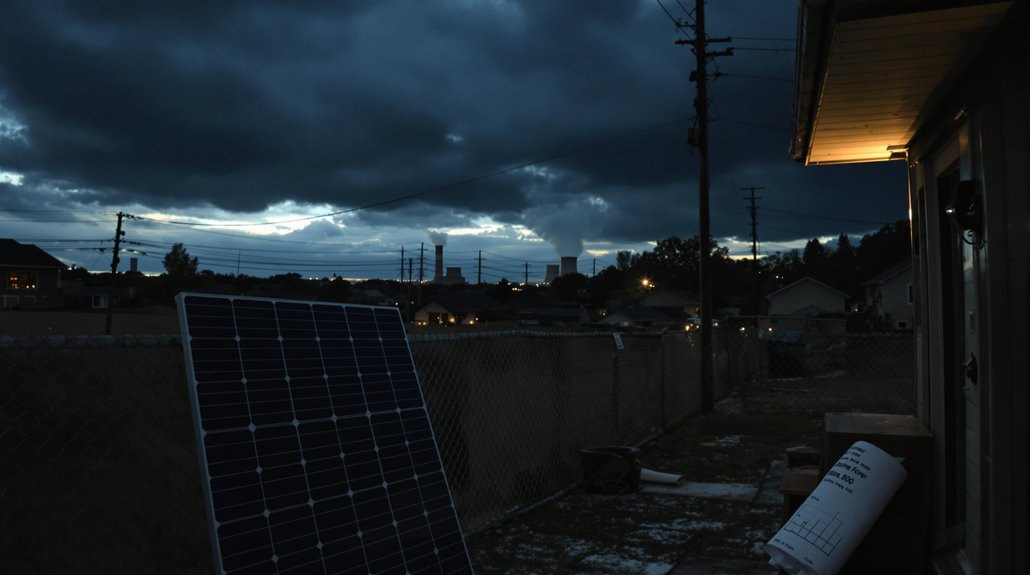Europe’s solar push is caught in a complex global power struggle. After Russia’s invasion of Ukraine, the EU pledged to end its dependence on Russian gas by 2027. Solar energy now provides 9% of EU electricity, but this progress faces threats from shifting alliances and policy changes. China dominates the solar supply chain while European manufacturers struggle. The continent must now balance energy independence against mounting economic and political pressures.
As Europe’s solar industry reaches new heights, the renewable energy source has surpassed coal in the EU’s power generation mix for the first time in 2024. This milestone represents a significant change in the continent’s energy landscape, with solar now accounting for 9% of all EU electricity production.
The EU is projected to install a record 70 GW of new solar capacity in 2025, up from 65.5 GW in 2024. Under medium growth scenarios, total solar capacity could reach 327.6 GW by the end of 2025, with annual growth rates of 18-20% expected to continue.
Hungary, Greece, and Spain are leading the solar transformation, with these countries generating 25%, 22%, and 21% of their electricity from solar, respectively. On sunny days, both Hungary and the Netherlands have met more than 80% of their national electricity demand with solar power on over 70 separate days.
This rapid expansion aligns with the EU’s ambitious goal for renewables to cover 42.5% of final energy consumption by 2030. These efforts are part of the broader global transition where energy storage solutions will be crucial to address the intermittent nature of renewable power sources. Solar power is playing a vital role in the European Green Deal and in reducing dependence on Russian gas by 2027. The forecast indicates that the EU solar fleet could reach 672 GW by 2030 under continued strong growth.
However, the solar boom isn’t without challenges. Growth rates dropped from over 50% in 2023 to just 4% in 2024, mainly due to permitting delays and reductions in government incentives. Policy reversals, like France’s cut to rooftop solar feed-in tariffs, threaten future expansion.
Europe’s solar success faces headwinds as regulatory hurdles and incentive cuts slow the once-explosive growth trajectory.
Grid integration remains a significant hurdle. As more solar comes online, the existing power infrastructure needs urgent upgrades to handle the intermittent nature of solar generation. The transition has resulted in approximately €59 billion saved in fossil fuel import costs since 2019 due to increased wind and solar generation.
Despite these obstacles, distributed solar solutions, including rooftop and balcony installations, are gaining popularity across the continent. Germany is seeing a surge in balcony solar units, while agri-PV systems that combine agriculture with solar production are expanding in several member states.
The EU’s solar ambitions represent not just an energy evolution, but a strategic shift toward energy independence and climate action.








